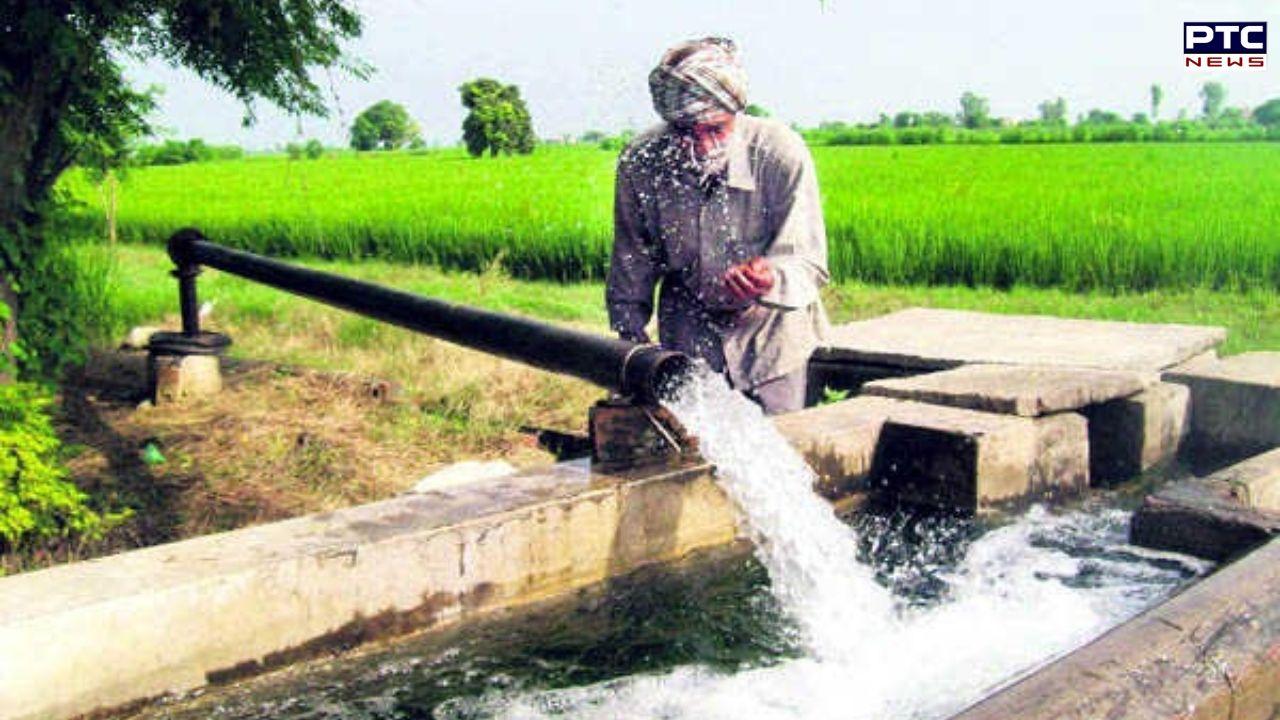

Punjab, Haryana lost 64.6 billion cubic metres of groundwater from 2003 to 2020
PTC News Desk: Punjab and Haryana lost a startling 64.6 billion cubic metres of groundwater between 2003 and 2020, a study has found. The study highlights the possible effect of urbanisation on this rapidly dwindling resource. To put it in perspective, researchers from IIT-Delhi and NASA's Hydrological Sciences Laboratory estimate that this amount of groundwater could fill almost 25 million Olympic-sized swimming pools.
According to research, the highest level of depletion in India is associated with increased water consumption by industries and households, agriculture and population growth. The study, titled 'Detection and Social Economic Attribution of Groundwater Depletion in India', was published in the Hydrogeology Journal on October 14.
The report cited earlier research to remark that "substantial groundwater depletion" was detected in Gurgaon and Faridabad, where water-intensive paddy cultivation is limited, implying that much of the resource in these locations was likely depleted due to urban development.
According to Manabendra Saharia, assistant professor in the Department of Civil Engineering at IIT-Delhi, "Long-term implications of groundwater loss include reduced agricultural productivity and degraded soil quality. This will have societal implications for an agriculture-dominated state." When asked how Haryana could reduce the loss of water, Saharia said rainfall harvesting and precision agriculture were critical to replenishing aquifers.
Researchers used data from the Central Ground Water Board (CGWB), on-site inspections, satellite data, and hydrological models to evaluate groundwater levels across the country. These figures were then correlated with regional socioeconomic parameters. For example, data from the India Meteorological Department (IMD) was used to investigate any changes in rainfall patterns throughout the same period.
Based on its research, the paper identified five regions in India with the highest levels of groundwater depletion: Punjab and Haryana topped the list, followed by Uttar Pradesh, West Bengal and Chhattisgarh.
While irrigation for agriculture was a common factor for groundwater extraction in all five hotspots, the study found that other possible causes in Punjab and Haryana included industrial expansion, population increase, and urbanisation.
Data showed that groundwater levels in Punjab and Haryana fell by 8-10% between 2000 and 2015. In the two states, the factory growth rate was 69% in FY 2004-2005 and increased to 170% in FY 2018-19. Similarly, urbanisation growth was 10% in 2001 and increased to 20% by 2011.
"During this decade (2001 to 2011), the level of urbanisation, i.e., percentage of urban population, has increased by 10%−20%, representing one of the highest increases in urban population across the country… In addition, groundwater demands for domestic and industrial use show a significant increase of 26%–228%. Thus, despite government interventions and no perceptible decline in precipitation, groundwater demand has accelerated leading to depletion."
- With inputs from agencies
